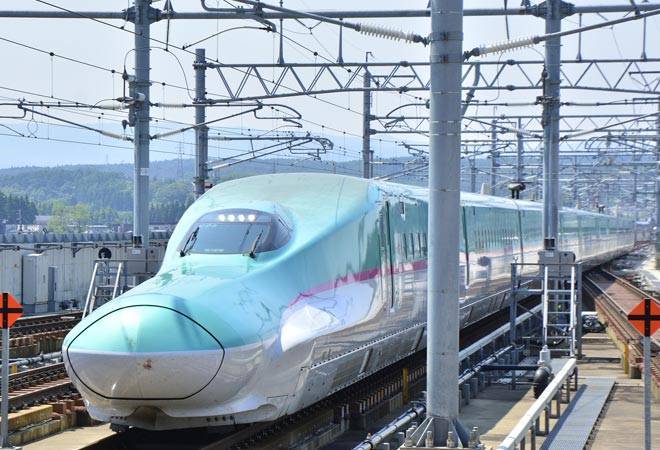Snapshot
Over the last two weeks, the Shinde-Fadnavis government has approved multiple pending clearances, including those related to forest and environment, and fast-tracked the project in the state.
Maharashtra’s Deputy Chief Minister Devendra Fadnavis announced on Thursday (14 July) that all clearances have been granted for the Mumbai-Ahmedabad High-Speed Rail Corridor in the state.
While the work on the bullet train project has progressed rapidly in Gujarat, it suffered delays under the Uddhav Thackeray-led Maha Vikas Aghadi (MVA) government in Maharashtra, which had labelled the project as “vanity”. The lack of political will in the state government meant that bureaucratic clearances and land acquisition for the project were delayed.
“The project deadline got pushed back at least three years from 2023 to the end of 2026 due to the attitude of the Uddhav Thackeray government since 2019. So much so that the Prime Minister had last instructed that the high-speed corridor be operationalised in Gujarat first, without waiting for Maharashtra. Now, we hope work will get fast-tracked on the entire stretch,” a senior government official said recently.
The new government under Chief Minister Eknath Shinde and Deputy Chief Minister Fadnavis is now trying to bring the country’s first and only high-speed rail project back on track in Maharashtra.
Over the last two weeks, the Shinde-Fadnavis government has approved multiple pending clearances, including those related to forest and environment, and fast-tracked the project in the state.
1) Land Acquisition
Out of the total 508 km distance covered by the Mumbai-Ahmedabad High-Speed Rail Corridor, 348 km lies in Gujarat, 4 km in Dadra and Nagar Haveli, and the remaining 156 km is in Maharashtra.
The project, News18 says, needs a total of 1,396 hectares of land. Out of this, only about 298 hectares has to be acquired in Maharashtra and the rest in Gujarat (954 hectares) and Dadar and Nagar Haveli (8 hectares). While Gujarat and the Union Territory of Dadar and Nagar Haveli have completed land acquisition, Maharashtra, under the MVA government, had acquired only 150 hectares till April this year.
The Shiv Sena-led government used stalling tactics to delay the project despite Prime Minister Narendra Modi instructing the state government to expedite the acquisition of land after he reviewed the project during a PRAGATI review meeting in November 2020.
After taking office on 30 June, the Shinde-Fadnavis government expedited the land acquisition process in Maharashtra.
In a letter to the new Maharashtra government, Satish Agnihotri, the chief of the National High-Speed Rail Corporation Limited who was sacked last week, pointed out that progress on land acquisition in Maharashtra stood at 72 per cent, and only 39 per cent was under physical possession.
Union Minister for Railways Ashwini Vaishnaw said on 5 July that the faster land acquisition in Maharashtra would give a fillip to work on the Mumbai-Ahmedabad bullet train corridor in that state.
2) Bandra-Kurla Complex Terminus
The Mumbai Metropolitan Region Development Authority has ordered the removal of a structure of the Bharat Petroleum Corporation Limited on a 4.2-hectare plot at the Bandra-Kurla Complex (BKC), which is the starting point of the Mumbai-Ahmedabad bullet train route and is earmarked for a terminus of the high-speed train project. The structure is to be removed before September this year, reports say, clearing way for a station with six platforms and a three-storey underground structure.

A tender for the construction of the terminus had been floated in 2019, and seven companies had expressed interest in the project. However, it had to be cancelled in February this year as the MVA government in Maharashtra continued to block the plan despite the National High-Speed Rail Corporation Limited granting 11 extensions.
3) BKC-Shilphata Tunnel
A 21-km-long tunnel, including a seven-km-long undersea twin tunnel below Thane Creek, planned between the underground station at BKC and Shilphata as part of the bullet train corridor, was also delayed due to the MVA government’s unwillingness to grant clearance for the project.
In November 2021, NHSRCL invited bids for tunnelling works to construct the underground structure. However, the tender was cancelled in February 2022, citing ‘administrative reasons’.
The work on the tunnel could not go ahead as planned because of the non-availability of 3.92 hectares of land in Vikroli, reports say.
Out of the tunnel’s 20.37 km length, around 15.4 km of tunnelling will be completed using three different tunnel boring machines. The remaining 4.96 km will be executed with the new Austrian tunneling method. The tunnel’s depth will vary from 25 metres to 40 metres.
With Fadnavis announcing clearance for all pending projects which are part of the bullet train corridor, the BKC-Shilphata tunnel is also likely to see progress.


